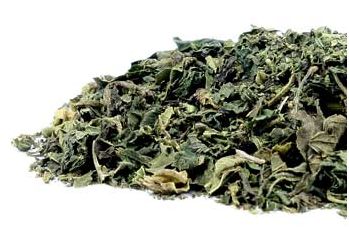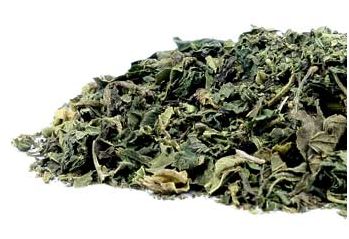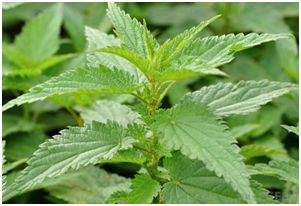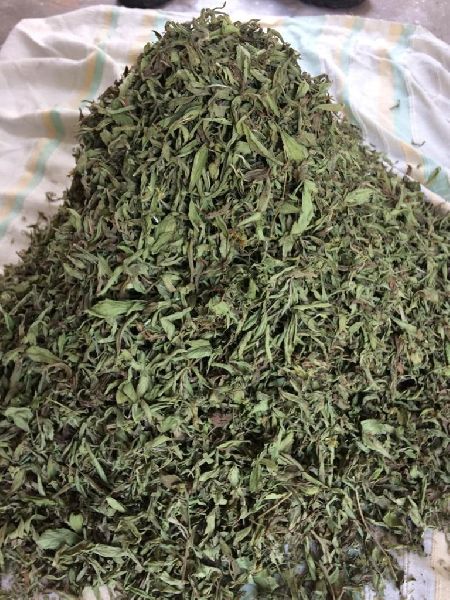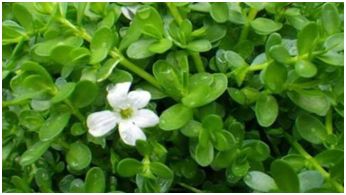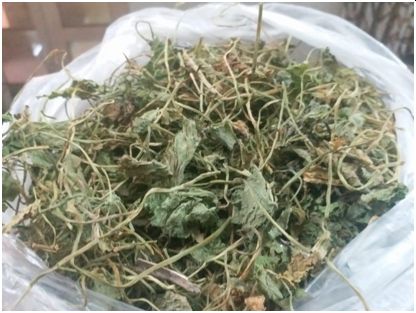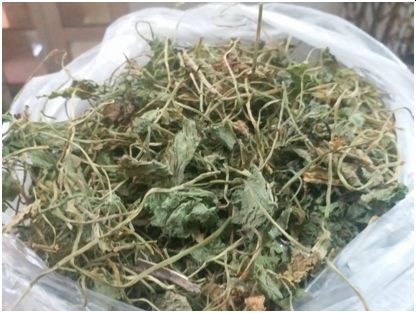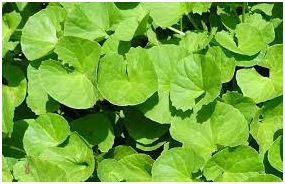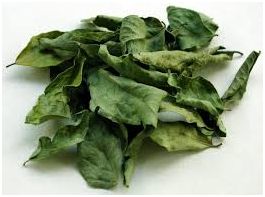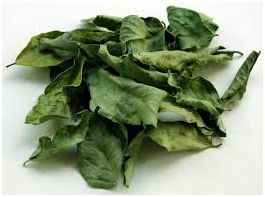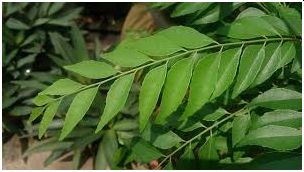-
dlherbalfarms@gmail.com -
View Mobile Number - Send SMS
- Send Email
- GST No. 07AHKPB8947L1ZT
Dried Leaves
Leading Manufacturers, Exporters, Wholesaler, Trader and Distributor of Dried Nettle Leaves, Dried Stevia Leaves, Dried Jal Brahmi Leaves, Dried Madukparni Leaves and Dried Curry Leaves from Delhi.
| Type | Dried |
| Form | Leaves |
| Packaging Type | As Requirement |
| Drying Process | Sun Dried |
| Botanical Name | Urtica Dioca |
| Colour | Green |
The healing powers of nettle are well steeped in the folklore and traditions of various cultures. It was used primarily as a diuretic and laxative in ancient Greek times.
For hundreds of years, practitioners of herbal medicine have recommended stinging nettle as a treatment for the pain of arthritis and gout, anaemia, allergies and urinary problems or as a topical treatment for eczema, insect bites and painful muscles.
The name stinging nettle comes from the Latin word ‘urere’ - which means ‘to burn’ because of the small stinging hairs on the stems and leaves.
KEY APPLICATION: Reduces hypertension, boost immunity, joint pain, diabetes, kidney stone, respiratory tract disease, asthma, stop bleeding, inflammation, prostate cancer, allergic rhinitis, diarrhoea, gastrointestinal disease, IBS, urine output, eliminates uric acid from the body, detoxifies the blood, treatment of nephritis, haemoptysis and other haemorrhages.
PLANT FAMILY: Urticaceae
BOTANICAL NAME: Urtica Dioca
VERNACULAR NAMES: Bichoo buuti, Stinging Nettle, Dwarf Nettle, Devil’s leaf, Shisuun, Anjuraa
CHEMICAL COMPOSITION OF LEAF
The urticating properties of the hairs are attributed to the presence of acetylcholine, histamine and hydroxytryptamine. The leaves gave flavonoids (including rutin), sterols, carotenoids, minerals, magnesium, potassium, calcium, iron, Vitamin A, Vitamin C, Vitamin B, Vitamin K1and more!
MEDICINAL PROPERTIES
The understanding of medicinal properties will help us utilize the herb better. Below are medicinal properties along with its meaning indicating multiple health benefits:
- Anti-allergic- Tend to relieve or control allergic symptoms.
- Anodyne- Alleviate pain in the body.
- Antilithic- Prevent or eliminate kidney stones.
- Anti-inflammatory- Reduce redness, swelling, pain, tenderness, heat etc.
- Antioxidant- Neutralize the oxidation effect of free radicals.
- Antimicrobial- Destroy or inhibit the growth of microorganisms & especially pathogenic microorganisms.
- Anti-cancer- Prevent a malignant and invasive growth or tumour.
- Anti-hypertensive- Reduce high blood pressure.
- Anti-diarrhoeal- Relieve symptoms of diarrhoea.
- Astringent- Cause the contraction of skin cells and other body tissues.
- Anti-rheumatic- Prevent any disorder of extremities, characterized by pain and stiffness.
- Anti-spasmodic- Used to relieve spasm of involuntary muscle.
- Anti-histamine- Treats a compound that is released by cells in response to injury and in allergic and inflammatory reactions, causing contraction of smooth muscle and dilation of capillaries.
- Diuretic- An agent that increases the flow and volume of urine.
- Decongestant- Relieve mucus congestion of the upper respiratory tract.
- Expectorant- Promotes the secretion, liquefaction or expulsion of the sputum from the respiratory tract.
- Pectoral - Strengthen chest muscle
- Rubefacient- Cause redness of the skin, as a medicinal application.
- Styptic- Stop bleeding when it is applied to a wound.
- Tonic- Invigorates or strengthens the system of the body, boosts energy, and improves overall health and longevity.
AYURVEDIC PROPERTIES
Rasa (Taste) – Kashaya (Astringent), Katu (bitter)
Guna (Qualities) – Laghu (Light), Dry (Rooksha)
Virya (Potency) – Sheeta (Cooling)
Vipaka (Post digestive effect) – Ushna (Hot potency)
Effect on tridosha (Humors) - Reduces Pitta, Kapha & increases Vata
NETTLE LEAVES TEA
Dried Nettle leaves are infused in hot water to be taken as a tea to get its health benefits.
Prepare a tea by steeping 1 teaspoon of dried stinging nettle leaves in hot water for 5 to 10 minutes. You can also flavour your cup of nettle tea with lime and honey.
(Please note that the exact amount of dried leaves to be used depending on the age, strength, digestive power, nature of the illness, the state of the viscera, humors and disorders.)
IMPORTANT NOTE
The information provided is for educational purposes only. This data is not to be considered complete and is not guaranteed to be accurate.
| Business Type | Manufacturer, Exporter, Supplier, Trader |
| Type | Dried |
| Form | Leaves |
| Packaging Type | As Requirement |
| Drying Process | Sun Dried |
| Botanical Name | Stevia Rebaudiana |
| Colour | Green |
STEVIA: The Herbal sugar for the 21st Century. Make your own natural powdered sugar by grinding leaves in a mixer grinder. Stevia is an all-natural sweetener with zero calories, zero carbohydrates and a zero glycaemic index & pharmaceutical properties therefore key source sweetener for the diabetic world.
With no calories and very little bitter aftertaste, stevia is an excellent alternative sweetener to sugar for teas, soft drink, confectionery, bakery etc. As a supplement to the diet, natural Stevia Rebaudiana reduces one's craving for sweets and fats, and "turn off" hunger sensations.
The plant Stevia rebaudiana has been used for more than 1,500 years by the Guarani people of South America who called it ka'a he'ê ("sweet herb"). The leaves have been used traditionally for hundreds of years in both Brazil and Paraguay to sweeten local teas and medicines, and as a "sweet treat".
Stevia rebaudiana (Bertoni) was discovered by Europeans in Paraguay in 1888 by Dr.M.S.Bertoni. He later botanically described and named the plant (1905) in honour of Paraguayan chemist Dr. Rebaudi.
Stevia possesses medicinal properties due to the presence of phytochemicals. It is sweet due to the presence of glycosides. Since glycoside is not a carbohydrate-based molecule therefore stevia is calorie-free. Stevia is a natural sweetener without any calories.
Stevia's excellent stability against pH, salt and high temperature conditions makes it an ideal sugar substitute for many baking and cooking applications. It does not ferment, colour or precipitate.
KEY APPLICATION: Increase mental alertness, energy levels, lowers blood pressure, cholesterol, control diabetes, prevent tooth decay, gingivitis, cavities, mouth sores, help in stomach disorders & helpful in digestion, lower blood sugar & weight loss.
PLANT FAMILY: Asteraceae
BOTANICAL NAME: Stevia Rebaudiana
VERNACULAR NAMES: Stevia, Sweetleaf, Sweet honey leaf, Candy leaf, Madhu Patra, Honey yerba
CHEMICAL COMPOSITION OF LEAF
Stevia contains eight glycosides. These are the sweet components isolated and purified from the leaves of stevia. These glycosides include: Stevioside, rebaudiosides A, C, D, E, and F, steviolbioside, dulcoside A. Stevioside and rebaudioside A are the most plentiful and are responsible for sweet taste.
Stevia leaf having rich nutritive ingredients such as nine essential amino acids (aspartic acid, glutamic acid, lysine, isoleucine, serine, alanine, proline, methionine and tyrosine), water-soluble vitamins (folic acid, vitamin C and vitamin B2), six fatty acids (stearic, oleic, linoleic palmitic, palmitoleic and linolenic acids), active phytochemicals (steviol, austroinullin, β-carotene, rebaudi oxides, dulcoside, nilacin, stevioside, riboflavin and thiamine), minerals (calcium, phosphorous, sodium, potassium, iron, magnesium and zinc)
MEDICINAL PROPERTIES
The understanding of medicinal properties will help us utilize the herb better. Below are medicinal properties along with its meaning indicating multiple health benefits:
· Antioxidant- Neutralize the oxidation effect of free radicals.
· Anti-inflammatory- Reduces redness, swelling, pain, tenderness, heat etc.
· Anti-diabetic- Used to control the level of glucose (sugar) in the blood.
· Anti-Hypertensive- Reduce high blood pressure.
· Anti-tumour- Prevent or inhibit the formation or growth of tumours.
·Antimicrobial-Destroy or inhibit the growth of microorganisms and especially pathogenic microorganisms.
· Anti-Hypoglycaemic- Prevent abnormally diminished content of glucose in the blood.
· Diuretic- An agent that increases flow and volume of urine.
IMPORTANT NOTE
The information provided is for educational purposes only. This data is not to be considered complete and is not guaranteed to be accurate.
| Business Type | Manufacturer, Exporter, Supplier, Trader |
| Type | Dried |
| Packaging Type | As Requirement |
| Botanical Name | Bacopa Monnieri |
| Colour | Green |
| Leaves & Stem | Leaves & Stem |
| Drying Process | Sun dried |
Brahmi is a Sanskrit word that refers to the feminine essence of universal consciousness as well as the creative potential that emerges from pure awareness. The meaning of the word “Brahmi” is “intellect promoting”.
The main object of Ayurveda is to live the full length of life which is free from physical and mental disorders. Medhya rasayana herb (Brahmi) has been claimed to exert a pronounced effect on the mental capability of a person. The potential role of Brahmi is on intellectual function and mental performance. It is restorative with a specific effect on intellectual functions.
Bacopa has been a star of traditional Ayurvedic healing for centuries. Now modern-day research continues to confirm bacopa’s abilities to improve and positively change not just mental abilities like memory and learning, but also mental health like depression and anxiety. Best of all, it has far less severe side effects than the dangerous psychotropic drugs often prescribed today.
KEY APPLICATION: In psychic disorders, brain tonic, insanity, treat ADHD (Attention Deficit Hyperactivity Disorder), cognitive ability, retention of memory, support the nervous system, relieve stress, cure depression, reduce anxiety, improve learning ability, epilepsy, bronchitis, asthma, diarrhea
PLANT FAMILY: Scrophularaceae
BOTANICAL NAME: Bacopa Monnieri
VERNACULAR NAMES: Brahmi, Aindri, Nirbraahmi, Kapotavankaa, Bhaarati, Darduradalaa, Matsyaakshaka, Shaaluraparni, Jalaneem, Safed-Chammi, Piramivazhukkai
CHEMICAL COMPOSITION OF LEAF
The herb contains the alkaloids brahmine, herpestine, and a mixture of three bases. The herb also contains the saponins, monnierin, hersaponin, bacosides A and B.
MEDICINAL PROPERTIES
The understanding of medicinal properties will help us utilize the herb better. Below are medicinal properties along with its meaning indicating multiple health benefits:
· Adaptogen- Help the body adapt to stress whether physical, chemical or biological.
· Astringent- Cause the drying and tightening of skin cells and other body tissues.
· Diuretic- An agent that increases the flow and volume of urine.
· Sedative- Provide a soothing or calming effect or inducing sleep.
· Nervine- Potent nerve tonic that strengthens the nervous system.
· Anti-anxiety agent- Tend to prevent or relieve anxiety.
· Antispasmodic- Used to relieve spasm of involuntary muscle.
AYURVEDIC PROPERTIES
Rasa (Taste) – Tikta (Bitter), Kashaya (Astringent)
Guna (qualities)—Laghu (light to digest)
Virya (potency)- Sheeta (cold in potency)
Vipaka (taste conversion after digestion)- Madhura (sweet)
Effect on Tridosha (Humors) – Balances Kapha and Vata.
Prabhava – Medhya (improves intelligence)
DOSAGE
Whole plant- 1-3gm in powder form
(Please note that the exact dose depends on the age, strength, digestive power, nature of the illness, the state of the viscera, humors and disorders.)
IMPORTANT NOTE
The information provided is for educational purposes only. This data is not to be considered complete and is not guaranteed to be accurate.
| Business Type | Manufacturer, Exporter, Supplier, Trader |
| Botanical Name | Centella Asiatica |
| Colour | Green |
| Form | Leaves & Stem |
| Drying Process | Sun Dried |
It is the one “miracle elixirs of life” known over 2000 years ago. Its leaves have shape and appearance like webbed feet of a frog (Mandook= frog, and Parni=leaf).
Mandukparni is used in Ayurveda as is Medhya Rasayana (psychotropic drugs) and works on the mind for the improvement of intellect. The intake of herb overcomes mental confusion, stress, fatigue and supports better thinking.
It supports and improves all aspects of mental functioning, including comprehension (Dhi), memory (Dhriti) and recollection (Smriti).
KEY APPLICATION: leprosy, lupus, varicose ulcers, eczema, psoriasis, diarrhoea, fever, amenorrhea, diseases of the female genitourinary tract, relieve anxiety, improve memory & cognition, brain tonic, overcoming mental confusion, accelerate healing of chronic post-surgical and post-trauma wounds; treat second and third-degree burns, pain occurring in varicose veins.
PLANT FAMILY: Apiaceae
BOTANICAL NAME: Centella Asiatica
VERNACULAR NAMES: Indian Pennywort, Gotu kola, Mandukparni, Jal Brahmi, Jholkhuri, Khodabrahmi, Ondelaga, Kodangal, Vallarai, Brahma-Manduuki
CHEMICAL COMPOSITION OF LEAF
Triterpenoid saponins—brahmoside, asiaticoside, thankuniside; alkaloids (hydrocotyline); bitter principles (vellarin).
MEDICINAL PROPERTIES
The understanding of medicinal properties will help us utilize the herb better. Below are medicinal properties along with its meaning indicating multiple health benefits:
· Adaptogen- Help the body adapt to stress whether physical, chemical or biological.
· Anti-depressant- Tend to relieve or prevent depression.
· Nervine- Central nervous system relaxant.
· Sedative- Provides soothing or calming effect or inducing sleep.
· Antibiotic- Inhibit the growth of or destroy microorganisms.
· Detoxifier- Used to remove harmful chemicals from the body.
· Depurative- Purifying agent/ blood-purifier.
· Laxative- Tend to stimulate or facilitate the evacuation of the bowels.
· Diuretic- An agent that increases flow and volume of urine.
· Emmenagogue- Stimulate blood flow in the pelvic area and uterus, stimulate menstruation.
· Tranquilizer- Reduce tension or anxiety.
AYURVEDIC PROPERTIES
Rasa (Taste) – Kasaya (Astringent), Madhura (Sweet), Katu (Pungent), Tikta (Bitter)
Guna (Qualities) - Laghu (Light), Sara (Unstable)
Virya (Potency) – Sheeta (Cooling)
Vipaka (Post digestive effect) – Madhura (Sweet)
Effect on tridosha (Humors) - Pacifies Kapha & Pitta Doshas
DOSAGE
Whole plant- 3-6 gm in powder form
(Please note that the exact dose depends on the age, strength, digestive power, nature of the illness, the state of the viscera, humors and disorders.)
IMPORTANT NOTE
The information provided is for educational purposes only. This data is not to be considered complete and is not guaranteed to be accurate
| Business Type | Manufacturer, Exporter, Supplier, Trader |
| Form | Leaves |
| Packaging Type | As Requirement |
| Drying Process | Sun Dried |
| Type | Dried |
| Colour | Green |
| Botanical Name | Murraya Koenigii |
Curry leaves name derived from the Tamil word “Kari” meaning spicy, curry leaves are mentioned in ancient Tamil scriptures dating back to the 4th century AD for its amazing benefits and culinary significance.
Curry Leaves are a quintessential aromatic ingredient found in Indian households that have innumerable health and therapeutic benefits.
KEY APPLICATION : Promote appetite, digestion, reduce bad cholesterol, promote oral hygiene, destroy pathogenic organism, anti-diarrhea, anemia, diabetes, indigestion, obesity, kidney problems, liver problems, hair and skin problems, externally used against skin eruptions also.
PLANT FAMILY: Rutaceae
BOTANICAL NAME: Murraya Koenigii
VERNACULAR NAMES: Curry-Leaf, Surabhini-nimba, Karipattaa, Karuveppilei, Karivempu, Kattuveppilei, Meethi Neem, Kathneem, Gandhela, Barsanga
CHEMICAL COMPOSITION & NUTRIENT ANALYSIS OF LEAF
Leaves are rich in carbazole alkaloids, coumarin, glucoside, scopolin
Nutritional value per 100 g (3.5 oz)
Energy (108kcal), protein (6.1gm), fibre (6.4gm), phosphorus (57mg), calcium (830mg), iron (0.93mg), magnesium (44mg), Carotene (7560 µg), riboflavin (0.210mg), nacin (2.3mg), vitamin C (4mg), folic acid (23.5 µg)
MEDICINAL PROPERTIES
The understanding of medicinal properties will help us utilize the herb better. Below are medicinal properties along with its meaning indicating multiple health benefits:
· Antibacterial- Destroy bacteria or suppresses their growth.
· Antifungal- Have a killing action on fungi or destroy fungi.
· Antispasmodic- Used to relieve spasm of involuntary muscle.
· Antiprotozoal- Treat infections caused by protozoa.
· Anthelmintic- Expel or destroy parasitic worms especially of the intestine.
· Anti-cancer- Prevent a malignant and invasive growth or tumour.
· Anti-diabetic- Used to control the level of glucose (sugar) in the blood.
· Hepatoprotective- Prevent damage to the liver and cure a liver injury or liver dysfunction.
· Insecticidal- Capable of killing insects or controlling their growth.
· Stomachic- Stimulate gastric activity and improves appetite and digestion.
AYURVEDIC PROPERTIES
Rasa (Taste) –Tikta (Bitter), Kashaya (Astringent)
Guna (Qualities) – Laghu (Light to taste), Rooksha (Dry)
Virya (Potency) – Ushna (Hot)
Vipaka (Post digestive effect) – Katu (Pungent)
Effect on tridosha (Humors) - Balances Kapha & Vata
IMPORTANT NOTE
The information provided is for educational purposes only. This data is not to be considered complete and is not guaranteed to be accurate.

